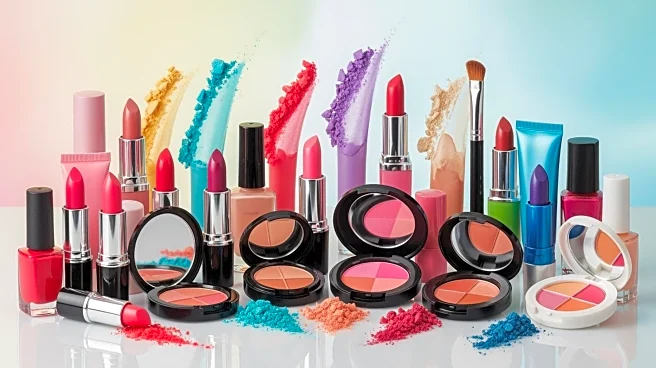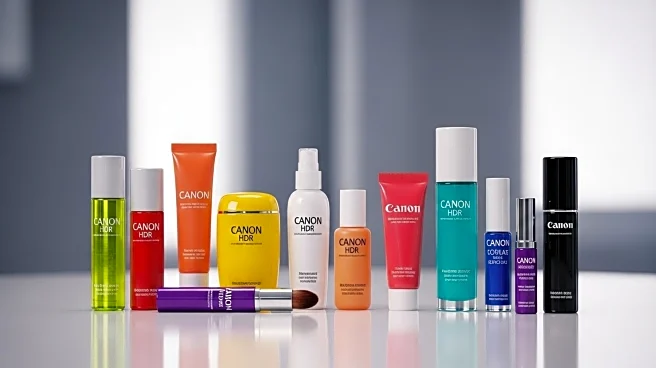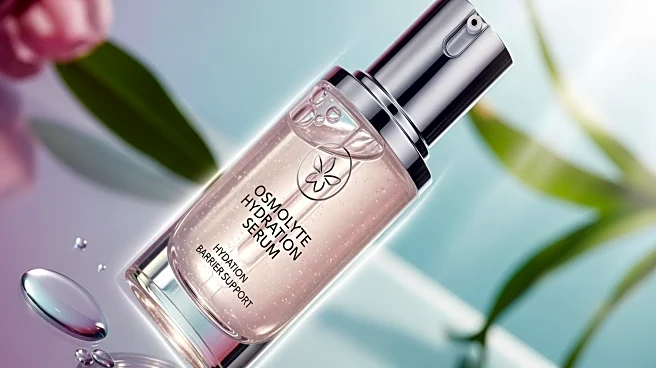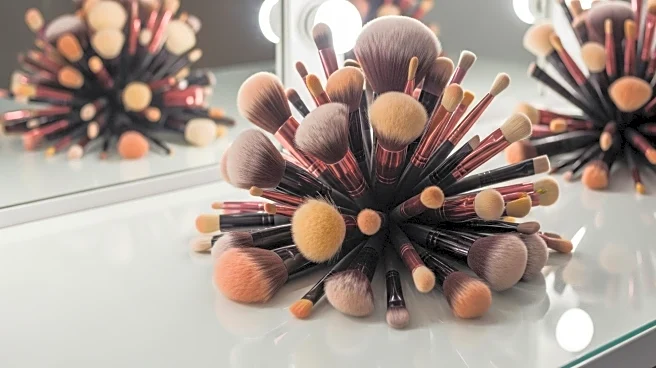What's Happening?
Mintel's recent 'Future of Colour Cosmetics' webinar has outlined significant trends shaping the U.S. color cosmetics industry. Presenter Clare Hennigan emphasized the growing consumer demand for durability,
multi-functionality, sensory appeal, and sustainable sourcing in cosmetic products. The webinar highlighted the importance of long-lasting wear, buildable coverage, and gentler formulations, particularly for sensitive skin. Sensory experience, including texture and scent, is increasingly crucial in product differentiation. Sustainability is driving innovation, with plant-based pigments and biotech alternatives gaining traction. The webinar also stressed the need for agility in responding to micro-trends without compromising core products.
Why It's Important?
The insights from Mintel's webinar are vital for U.S. manufacturers and suppliers aiming to stay competitive in the evolving cosmetics market. The emphasis on durability and sensory appeal reflects changing consumer preferences, which could influence product development strategies. The focus on sustainability highlights the industry's shift towards environmentally friendly practices, potentially affecting supply chain decisions. Understanding these trends can help companies align their offerings with consumer expectations, ensuring continued relevance and market share in a competitive landscape.
What's Next?
Manufacturers are encouraged to innovate by integrating sensory elements and sustainable practices into their products. Collaboration across industries, such as food and agriculture, could provide new opportunities for sourcing sustainable ingredients. Companies may also need to adapt existing products to meet emerging trends, rather than launching entirely new lines. This approach could streamline operations and reduce costs while maintaining consumer interest. As the industry continues to evolve, staying agile and responsive to consumer demands will be crucial for success.
Beyond the Headlines
The focus on sustainability and sensory experience in cosmetics reflects broader societal shifts towards environmental consciousness and personalized consumer experiences. These trends may influence regulatory policies and industry standards, promoting greater transparency and accountability. The integration of sensory elements could also lead to innovations in product design and marketing, enhancing consumer engagement and brand loyalty.











